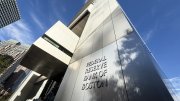Harvard’s 2012 financial statements reclassify for this year and last the “administrative assessment” (an annual decapitalization, equal to 0.5 percent of the endowment’s value) from a capital item to operating revenue [corrected from an expense item 12-3-13]—a different way of presenting about $129 million of funds in fiscal 2011, and slightly more in fiscal 2012. That change tells a story about Harvard’s altered financial circumstances, a useful accompaniment to the narrative from chief financial officer Daniel S. Shore and University treasurer James F. Rothenberg.
In 2001, late in his presidency, Neil L. Rudenstine and the Corporation created a “strategic infrastructure fund” (SIF) to prepare for campus development in Allston. Each school’s endowment would be tapped 0.5 percent annually, for five years, to yield $500 million to indirectly reimburse the central administration’s investments in necessary infrastructure and improvements in Allston, on the grounds that all Harvard would benefit as new facilities were funded by their tenant schools and created in coming decades.
President Lawrence H. Summers then advanced a sweeping vision for accelerated Allston development (science labs, new homes for the schools of education and of public health, cultural facilities), and in early 2004 the SIF was extended to 25 years and applied to broader uses, including the renovation of facilities vacated by units relocating to Allston and the cost of new buildings there. Given the endowment value then (about $19 billion), the assessment would yield an additional $2 billion over its extended life, even if the endowment did not appreciate—a sum that could support billions of additional borrowing to build in Allston. Meanwhile, as Shore and Rothenberg note, the University was already increasing its debt financing substantially. Centrally managed liquid funds were invested long term, alongside the endowment, to take advantage of the bull market, and Harvard put in place interest-rate exchange agreements meant to stabilize the costs of the anticipated future borrowings for the Allston work.
Today, none of the assumptions equating the administrative assessment with capital investment in Allston development remain. The University cannot borrow substantially more if it wishes to retain its top-tier credit ratings, and has much higher, continuing debt-service costs. The endowment, one-sixth smaller than at its fiscal 2008 peak, must support a larger faculty, physical plant, and financial-aid budget. After punishing losses on the interest-rate swaps and from lack of liquidity, the University is pursuing a lower-risk strategy for investing all its assets, including the endowment. That more cautious strategy must fund not only past Allston-related costs but also the extra, University-wide debt service. And the new Allston master-planning proposal (see “Economic Realities in Allston”) is vastly reduced from prior schemes. Much of the land is now a blank slate, for potential academic use far in the future.
Thus, treating the SIF as an Allston-related decapitalization item no longer makes sense; rather, it is an operating item—an assessment on endowment assets that defrays central operating expenses. A financial-reporting change thus reflects almost revolutionary upheaval in Harvard’s fiscal assumptions, operations, and position.







